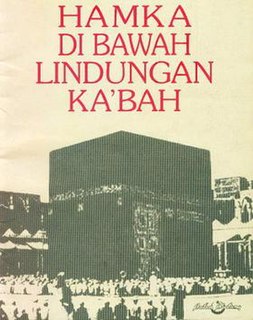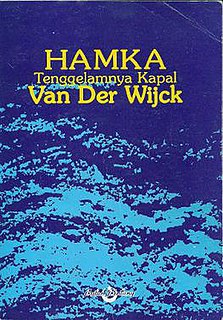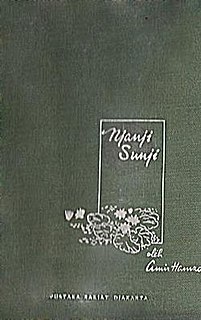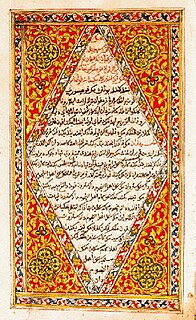
Chairil Anwar was an Indonesian poet and member of the "1945 Generation" of writers. He is estimated to have written 96 works, including 70 individual poems.

Indonesian literature is a term grouping various genres of South-East Asian literature.

Idrus was an Indonesian author best known for his realistic short stories and novels. He is known as the representative of the prose of the '45 generation of Indonesian literature.

Sitor Situmorang was an Indonesian poet, essayist and writer of short stories. Situmorang was born in Harianboho, North Sumatra, and educated in Jakarta. He worked as a journalist and literary critic in Medan, Yogyakarta and Jakarta for a variety of newspapers and periodicals.
Balai Pustaka is the state-owned publisher of Indonesia and publisher of major pieces of Indonesian literature such as Salah Asuhan, Sitti Nurbaya and Layar Terkembang. Its head office is in Jakarta.

Hans Bague Jassin, better known as HB Jassin, was an Indonesian literary critic, documentarian, and professor. Born in Gorontalo to a bibliophilic petroleum company employee, Jassin began reading while still in elementary school, later writing published reviews before finishing high school. After a while working in the Gorontalo regent's office, he moved to Jakarta where he worked at the state publisher Balai Pustaka. After leaving the publisher, he attended the University of Indonesia and later Yale. Returning to Indonesia to be a teacher, he also headed Sastra magazine. Horison, a literary magazine, was started in July 1966 by Jassin and Mochtar Lubis as a successor to Sastra, and was edited by Taufiq Ismail, Ds. Muljanto, Zaini, Su Hok Djin, and Goenawan Mohamad. In 1971, Jassin was given a one-year prison sentence and a two-year probation period because as the editor of Sastra, he refused to reveal the identity of an anonymous writer who wrote a story which was considered by the court to be blasphemous.

Tengku Amir Hamzah was an Indonesian poet and National Hero of Indonesia. Born into a Malay aristocratic family in the Sultanate of Langkat in North Sumatra, he was educated in both Sumatra and Java. While attending senior high school in Surakarta around 1930, the youth became involved with the nationalist movement and fell in love with a Javanese schoolmate, Ilik Sundari. Even after Amir continued his studies in legal school in Batavia the two remained close, only separating in 1937 when Amir was recalled to Sumatra to marry the sultan's daughter and take on responsibilities of the court. Though unhappy with his marriage, he fulfilled his courtly duties. After Indonesia proclaimed its independence in 1945, he served as the government's representative in Langkat. The following year he was killed in a socialist revolution led by the Communist Party of Indonesia and buried in a mass grave.

Poedjangga Baroe was an Indonesian avant-garde literary magazine published from July 1933 to February 1942. It was founded by Armijn Pane, Amir Hamzah, and Sutan Takdir Alisjahbana.

Sanusi Pane was an Indonesian writer, journalist, and historian. He was highly active in literary media, sitting on the editorial boards of several publications. He has also been described as the most important dramatist from before the Indonesian National Revolution.

Atheis is a 1949 Indonesian novel written by Achdiat Karta Mihardja and published by Balai Pustaka. The novel, using three narrative voices, details the rise and fall of Hasan, a young Muslim who is raised to be religious but winds up doubting his faith after dealings with his Marxist–Leninist childhood friend and an anarcho-nihilist writer.

Muhammad Salim Balfas, better known as M. Balfas, was an Indonesian writer and literary critic.
"Soerabaja" is a work of fiction by Indonesian writer Idrus variously described as a novel, novelette, and long short story. It was published in 1946 or 1947.

Di Bawah Lindungan Ka'bah is the 1938 debut novel of the Indonesian author Haji Abdul Malik Karim Amrullah (1908–1981). Written while the author worked in Medan as the editor of an Islamic weekly magazine, the novel follows the doomed romance of a young Minang couple from different social backgrounds. Generally praised for its simple yet eloquent diction, the novel has been twice adapted into film, first in 1977 and then in 2011.

Roestam Effendi was an Indonesian writer and member of the House of Representatives of the Netherlands. He is known for experimenting with the Malay language in the writing of his drama Bebasari and his poetry collection poetry anthology Pertjikan Permenoengan.

Tenggelamnya Kapal van der Wijck is an Indonesian serial and later novel by Haji Abdul Malik Karim Amrullah published in 1938. It follows the failed love between Zainuddin, a mixed-race man, and Hayati, a pure Minang woman.

Indonesian author Amir Hamzah (1911–46) wrote 50 poems, 18 pieces of lyrical prose, 12 articles, 4 short stories, 3 poetry collections, and 1 book. He also translated 44 poems, 1 piece of lyrical prose, and 1 book. The majority of Amir's original poems are included in his collections Njanji Soenji (1937) and Boeah Rindoe (1941), both first published in the literary magazine Poedjangga Baroe. His translated poems were collected in Setanggi Timoer (1939). In 1962 documentarian HB Jassin compiled all of Amir's remaining works – except the book Sastera Melajoe Lama dan Radja-Radja'nja – as Amir Hamzah: Radja Penjair Pudjangga Baru.

Njanji Soenji is a 1937 poetry collection by Amir Hamzah. Written some time after the poet was forced to marry the daughter of the Sultan of Langkat instead of his chosen love in Java, this collection consists of 24 titled poems and pieces of lyrical prose, none of which are dated. First published in the magazine Poedjangga Baroe, the collection has been republished as a stand-alone book several times.
"Padamoe Djoea" is a 28-line poem by Amir Hamzah which was included in his 1937 collection Nyanyi Sunyi. Hamzah's best-praised work, readings have generally focused on religious themes – mainly from an Islamic perspective, although Christian influences have been suggested.

Classical Malay literature, also known as traditional Malay literature, refers to the Malay-language literature from the Malay world, consisting of areas now part of Brunei, Malaysia, and Indonesia; works from countries such as the Philippines and Sri Lanka have also been included. It shows considerable influences from Indian literature as well as Arabic and Islamic literature. The term denotes a variety of works, including the hikayat, poetry, history, and legal works.















